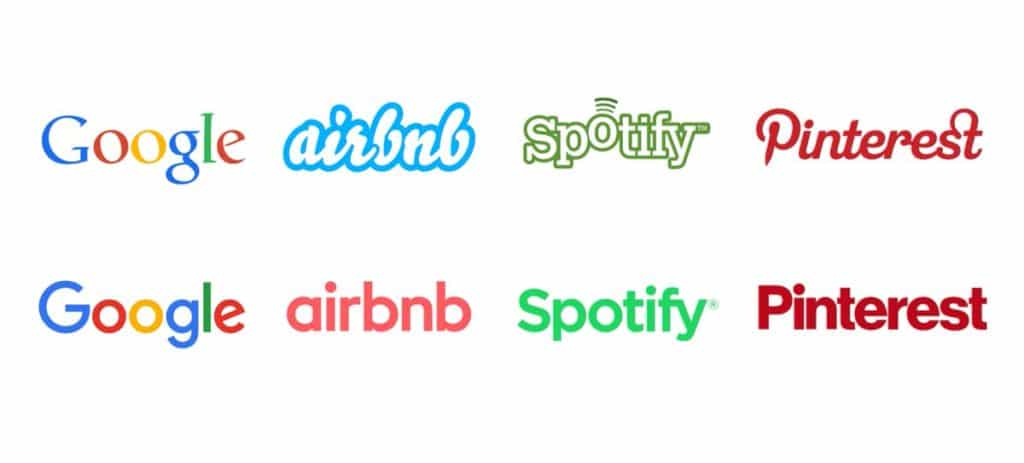I often get asked, “What are the main reasons to rebrand?” So, I thought I would write a blog post on the topic which should provide some clarity on the subject. A rebrand can feel like a fresh beginning, but it’s not always necessary or beneficial. Just because you don’t like your brand’s logo doesn’t mean you need to scratch everything. You should consider whether your logo and brand works for your business and to what extent it needs updating.
As has been well-publicised, a disastrous rebrand can hurt both your reputation and your bottom line. It’s hard to forget the disaster that was Gap’s 2010 logo redesign, while Tropicana’s sales fell 20% after their 2009 rebrand. There’s more brand lessons detailed in this article by the BBC; Lessons to be learnt from the Gap logo debacle.
What is a rebrand?
A rebrand reviews all aspects of the brand – from brand strategy and naming, through to changing the logo and visual identity.
What are the reasons to rebrand?
There are certainly reasons to consider a rebrand, as I’ll cover below. However, while these may be applicable, no decision should be made without doing significant research, having serious discussions with leadership, and crafting a strong execution plan.
That said, if you want to know if a rebrand is the right move, here are 6 reasons why it might be.
1. Your brand is outdated
This is probably the number one reason brands want to rebrand. If the look and feel of your brand is stale and you’re embarrassed to go on your website, a rebrand might be in the cards. If you haven’t had a brand refresh or rebrand in ten years or more, then you’re probably in need of a rebrand that is modern, flexible, and future-proof.
You may be constrained by cumbersome logos that don’t adapt well for the web or by names that are too product-specific. Logos need to be responsive in order to work across all marketing channels and an outdated logo just might not be that adaptable.
The instinct to rebrand is understandable; however, there is a difference between an old logo and an outdated logo. If you have a well-established brand, it’s best to do solid audience research before tossing the old one out. Again, the infamous Gap logo disaster saw a backlash because they wanted to modernise, when consumers felt connected to the iconic original logo.
2. You look like everybody else
Industries change and evolve, and innovative brands do their best to keep up. However, sometimes brands subconsciously or even consciously adopt each other’s traits – which leads to little differentiation or originality. A simple example of this is through colour – Netflix and YouTube are both streaming-video services that use a red, white, and black palette. When Twitch launched with a bright purple palette, it made a strong visual statement to differentiate.
Another reason brands can start to look like alike is because they try to one-up each other through rebrands. Just because a competitor changed a logo doesn’t mean you have to. You can see this phenomenon happening across the tech industry, as type designer James Edmonson of Oh No Type Co pointed out.

3. You’re going after a new audience
Sometimes the business is looking to attract a new group of people, but your branding is not primed to help you connect with them. Your brand should always speak to the people you’re trying to reach, so in this case, a rebrand may be the right choice. However, you don’t want to do anything that would alienate your existing customer base (again, think of the Gap reaction).
Ideally your rebrand would be something that enhances your brand identity in a way that both appeals to existing and new customers. Another option, in this instance, could be to keep the existing logo and just undertake a brand refresh to attract your new audience. A brand refresh would look primarily at your brand’s hierarchy and then adapt the visual identity to work.
4. Your brand doesn’t reflect your values
In general, people want to align themselves with brands whose values they share. If you’ve crafted a strong brand strategy and articulated your core identity (your company’s vision, mission, and values), you should know what those are. However, if those have evolved or were not initially articulated when your brand identity was created, they may not be reflected in your brand identity.
Many businesses are becoming more aware of the impact a good brand can have on the bottom line. Established businesses often do not have a brand strategy in place as they did not have the budget initially to work through the process. In this instance a full Brand Audit is useful to see where the improvements can be made.
5. You’re looking to expand or have expanded
With any success comes the need to expand. In these instances, many brands have original identities that don’t reflect their current brand strategy or offerings. The original brand was produced with little or no budget to get the business off the ground. A rebrand is required to create a brand which fits with the new expansion plans.
Give&Take Care CIC had a naive logo and brand – produced cheaply when the project was in the early stages. Once the project gained funding, G&TC commissioned a complete brand redesign. We produced a brand new logo with fresh messaging and a new visual system. As a result, this energised the company and established it as a credible business.
6. Change of ownership/direction
With new ownership or partnership comes a new era, so it makes sense to rebrand. The old brand name may no longer fit so a new name needs to be considered or, in the case of mergers, a combination of both brand names. Once again it is important to look at the business plan and the brand strategy prior to undertaking any design work. A Brand Team should be established, representing both sides of the merged businesses. An external brand agency or consultant should also be brought in to manage the process.
Remember: don’t make the decision lightly
Rebranding is not always a bad idea, but it is important to have have done your research and understood what the business really needs. In some cases, you just need a little guidance to align your current branding with your current strategy. Sometimes it’s enough to do a Brand Refresh rather than a complete Rebrand. Learn more about the difference in this blog post: Rebrand or Brand Refresh?



